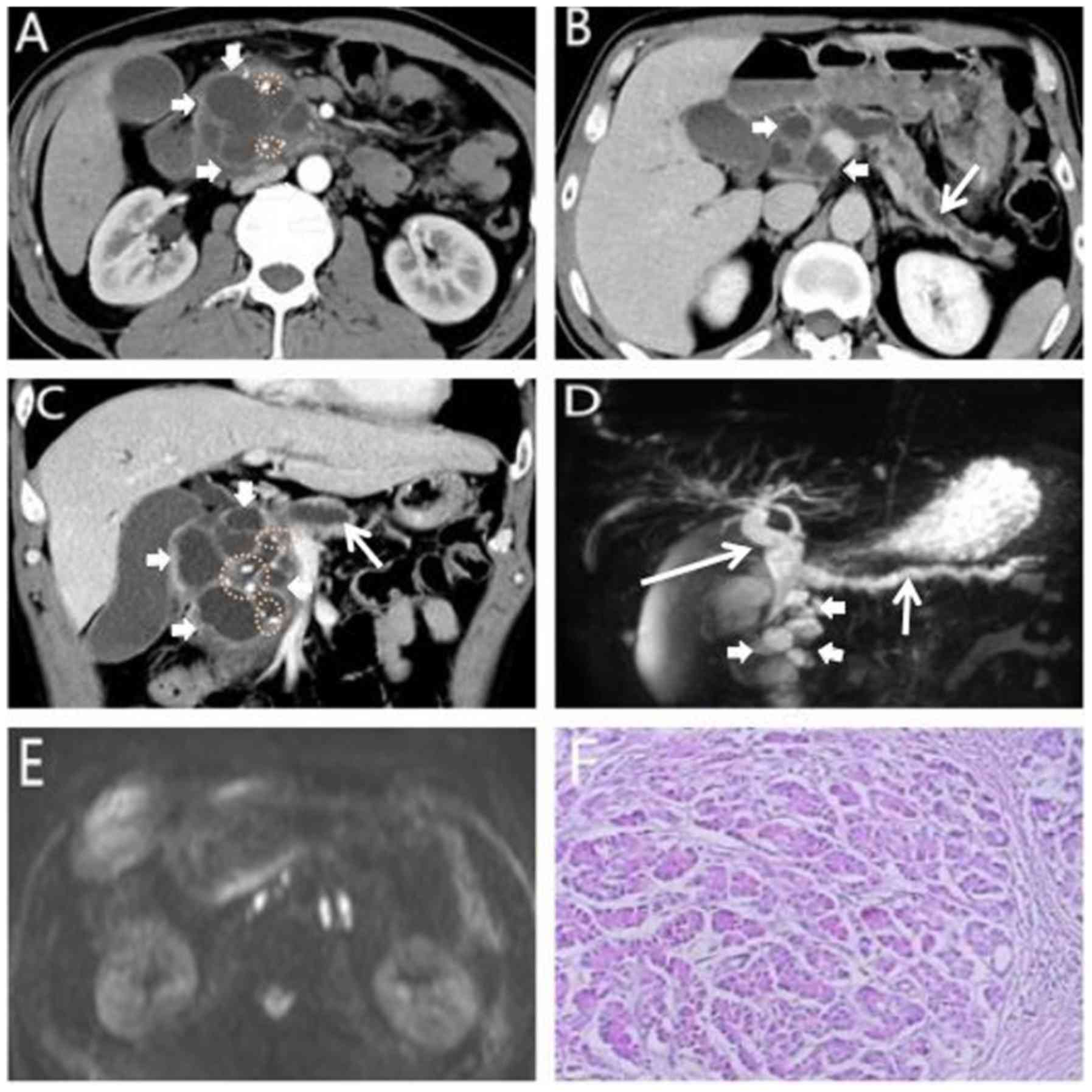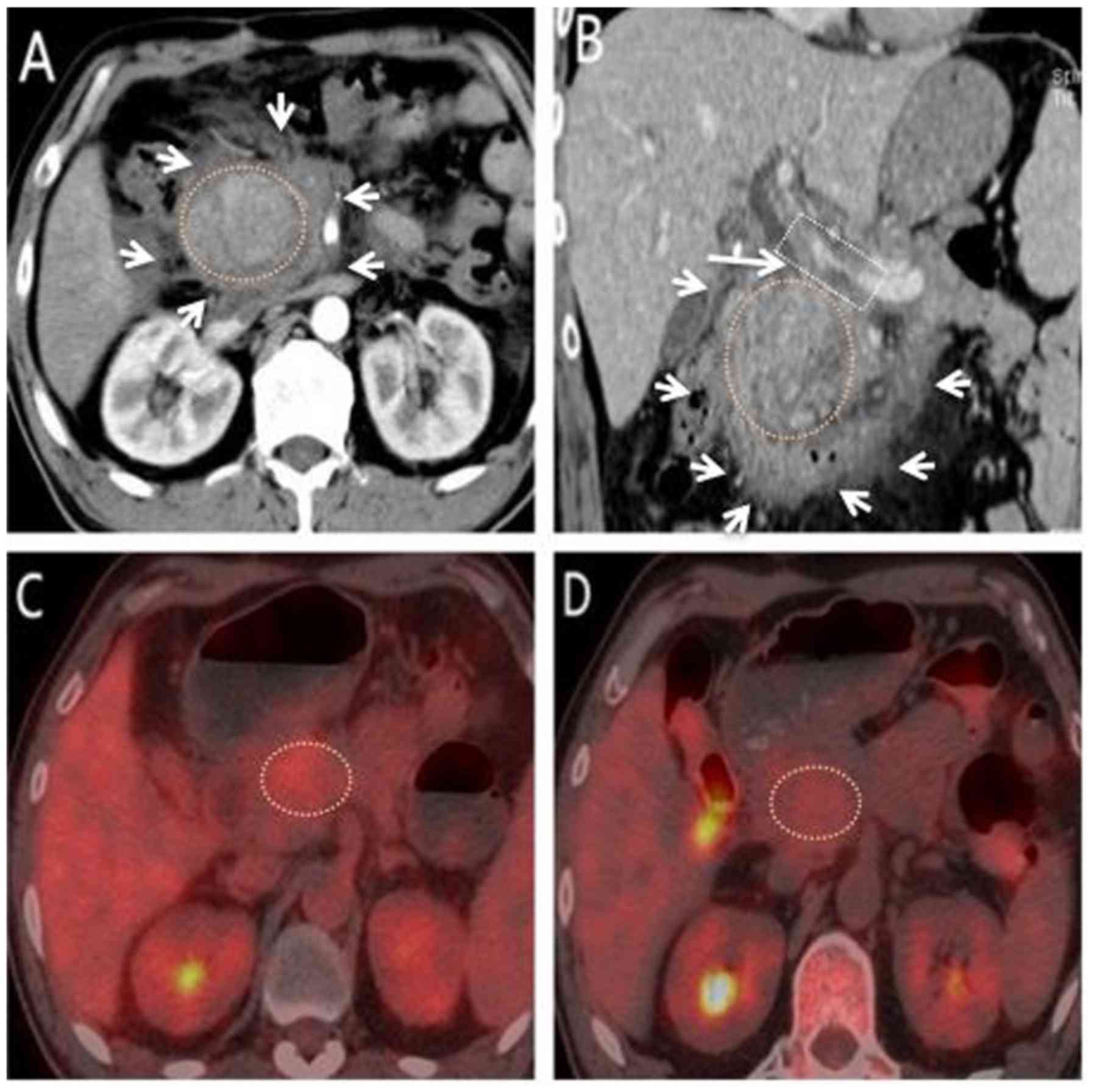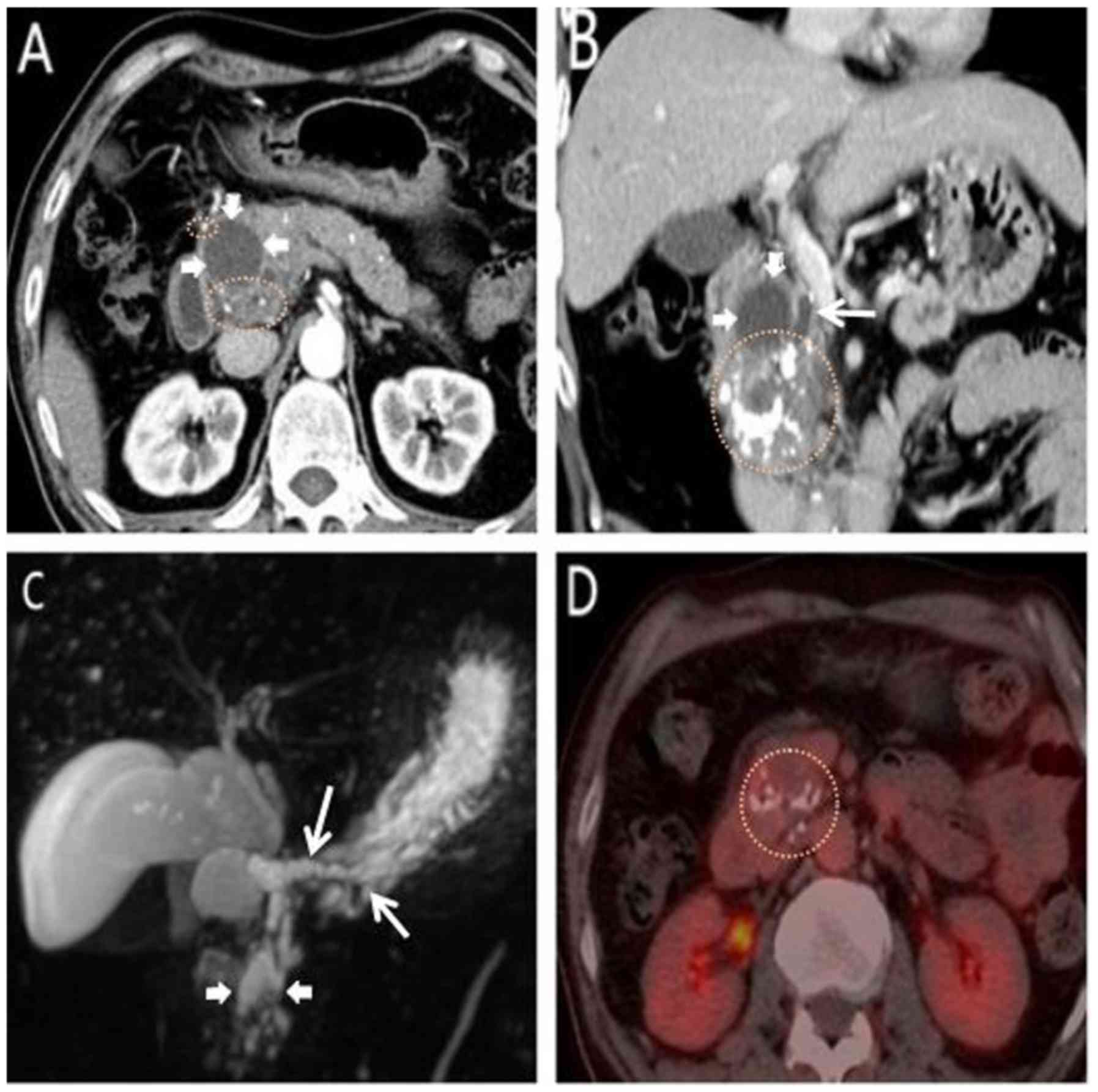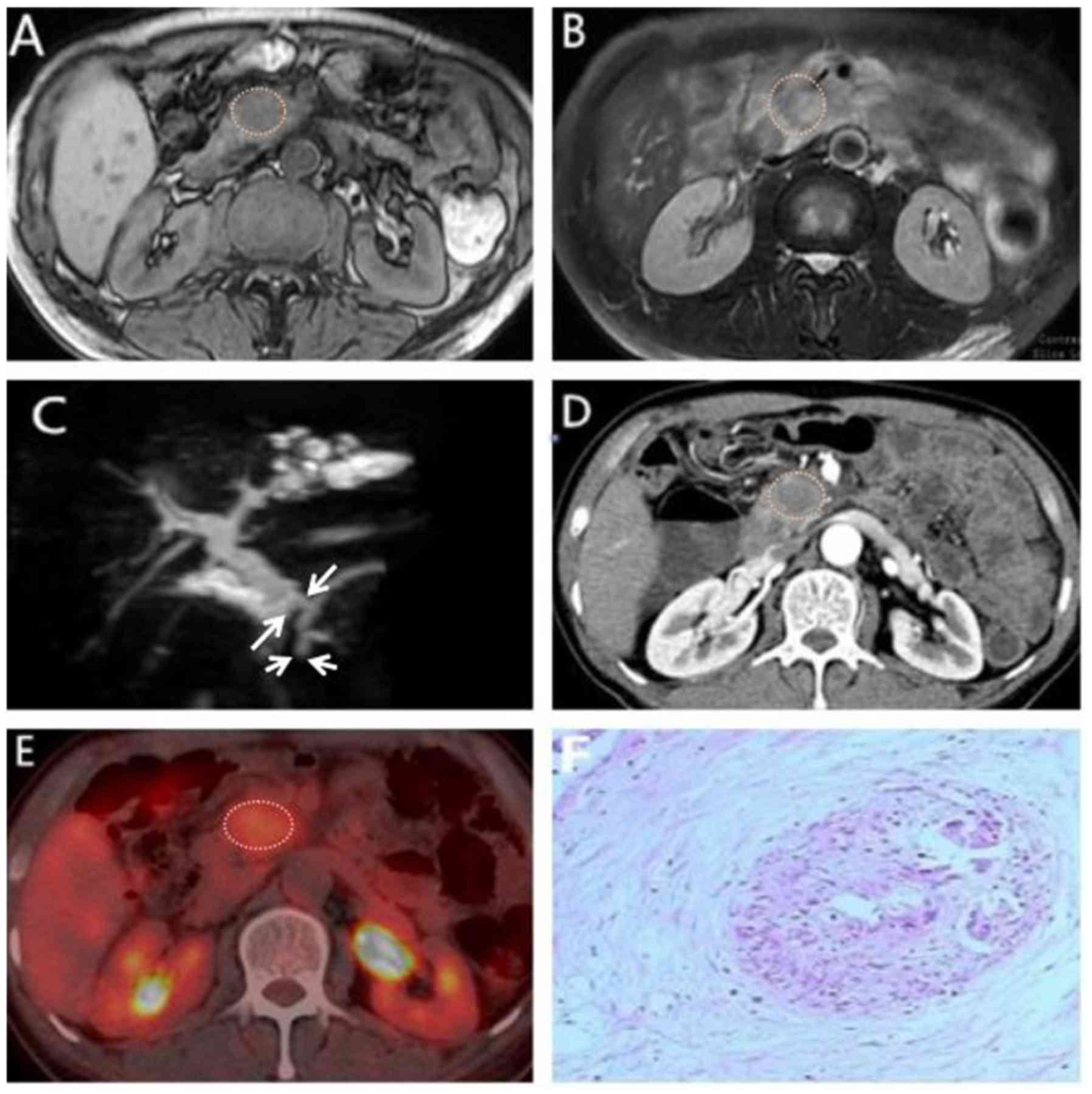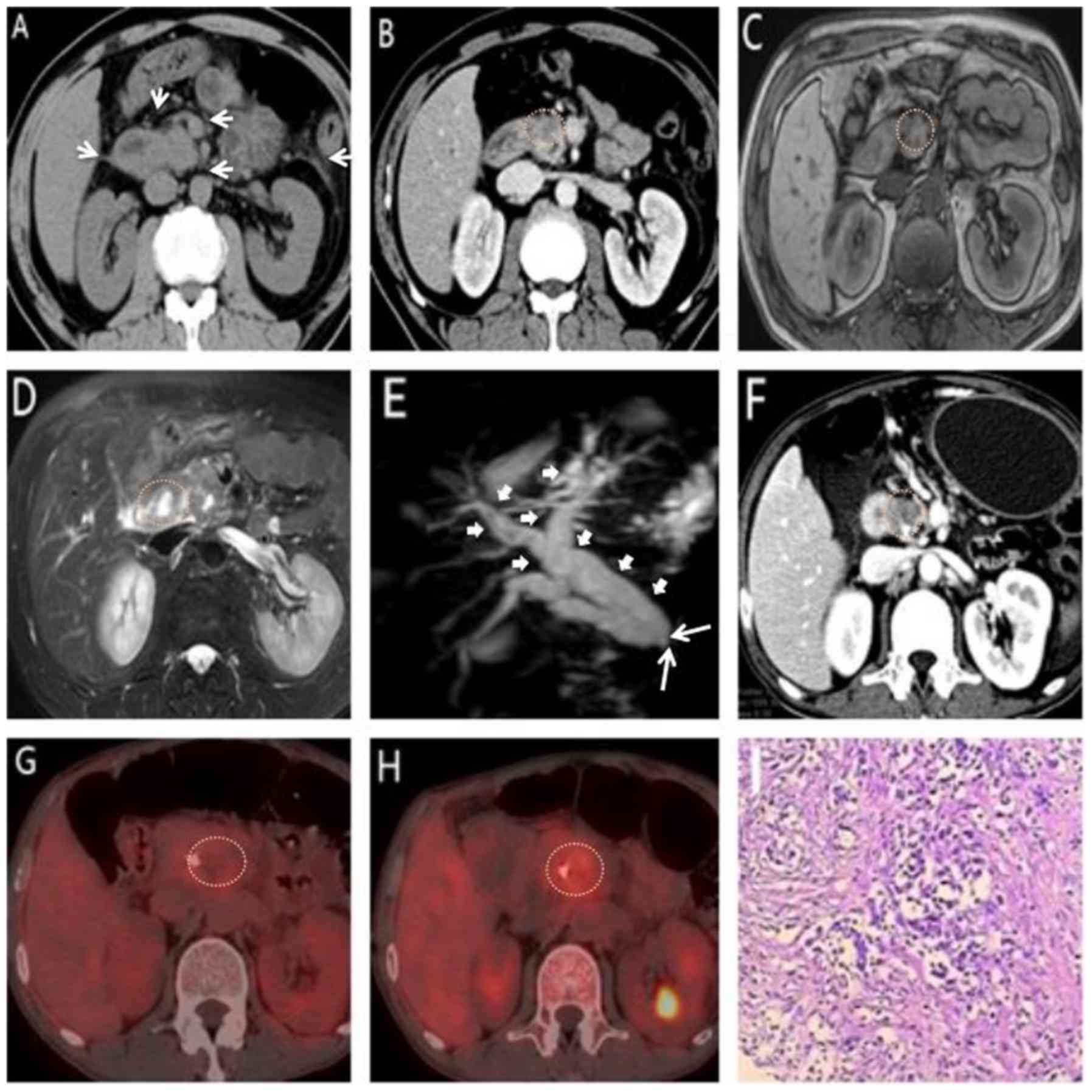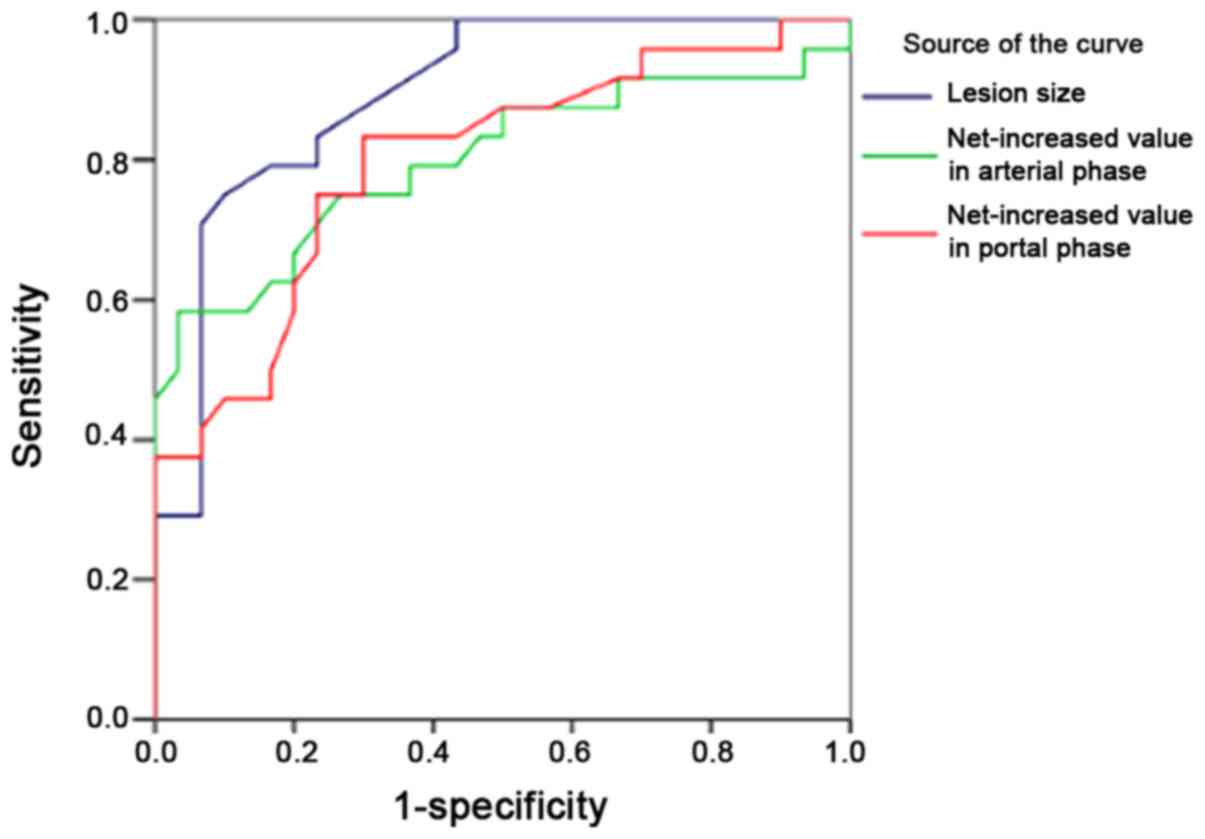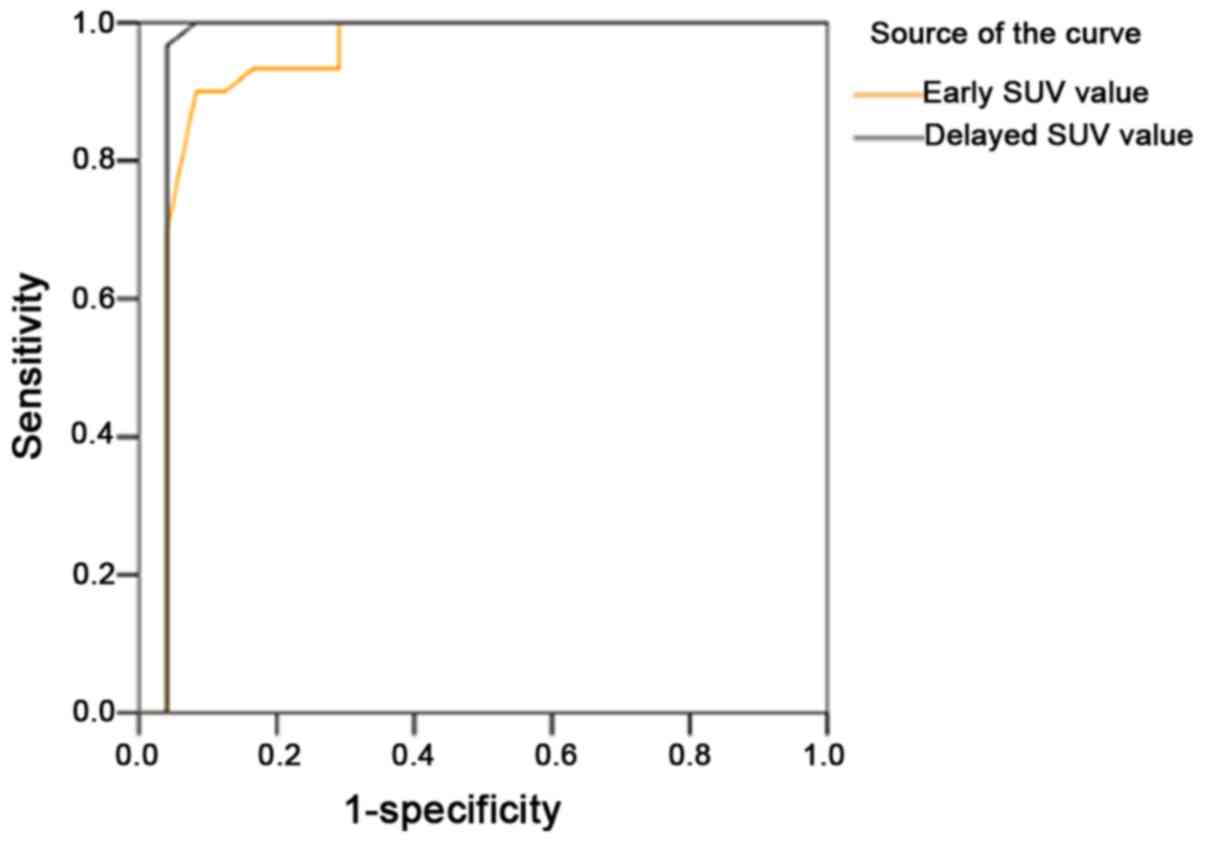|
1
|
Dutta AK and Chacko A: Head mass in
chronic pancreatitis: Inflammatory or malignant. World J
Gastrointest Endosc. 7:258–264. 2015. View Article : Google Scholar : PubMed/NCBI
|
|
2
|
Merdrignac A, Sulpice L, Rayar M, Rohou T,
Quehen E, Zamreek A, Boudjema K and Meunier B: Pancreatic head
cancer in patients with chronic pancreatitis. Hepatobiliary
Pancreat Dis Int. 13:192–197. 2014. View Article : Google Scholar : PubMed/NCBI
|
|
3
|
Yao L, Jian Z and Jing ZC: Differential
diagnosis of imaging between the mass-forming chronic pancreatitis
and pancreatic carcinoma. Chin J Pancreatol. 15:59–63. 2015.
|
|
4
|
Braganza JM, Lee SH, Mccloy RF and Mcmahon
M J: Chronic pancreatitis. Lancet. 377:1184–1197. 2011. View Article : Google Scholar : PubMed/NCBI
|
|
5
|
Kato K, Nihashi T, Ikeda M, Abe S, Iwano
S, Itoh S, Shimamoto K and Naganawa S: Limited efficacy of
(18)F-FDG PET/CT for differentiation between metastasis-free
pancreatic cancer and mass-forming pancreatitis. Clin Nucl Med.
38:417–421. 2013. View Article : Google Scholar : PubMed/NCBI
|
|
6
|
Perumal S, Palaniappan R, Pillai SA,
Velayutham V and Sathyanesan J: Predictors of malignancy in chronic
calcific pancreatitis with head mass. World J Gastrointest Surg.
5:97–103. 2013. View Article : Google Scholar : PubMed/NCBI
|
|
7
|
Raimondi S, Lowenfels AB, Morselli-Labate
AM, Maisonneuve P and Pezzilli R: Pancreatic cancer in chronic
pancreatitis; aetiology, incidence, and early detection. Best Pract
Res Clin Gastroenterol. 24:349–358. 2010. View Article : Google Scholar : PubMed/NCBI
|
|
8
|
Min HS, Qiang LZ, Xiao Y, Chan Y, Wei ZH,
Wen WD and Jun S: Clinical efficacy of pancreaticoduodenectomy and
duodenum-preserving pancreatic head resection for the treatment of
chronic pancreatitis with mass in the head of the pancreas. Chin J
Dig Surg. 14:653–658. 2015.
|
|
9
|
Xue SA and Gong ZC: Progress in diagnosis
and surgical treatment for pancreatic head mass due to chronic
pancreatitis. Chin J Gen Surg. 25:434–438. 2016.
|
|
10
|
Yi L, Ming LY, Na L, Na LX and Lin DB:
Application of 18F FDG PET/CT in the diagnosis and differential
diagnosis of benign and malignant pancreatic lesions. J China Med
Univ. 43:547–552. 2014.
|
|
11
|
Lu N, Feng XY, Hao SJ, Liang ZH, Jin C,
Qiang JW and Guo QY: 64-slice CT perfusion imaging of pancreatic
adenocarcinoma and mass-forming chronic pancreatitis. Acad Radiol.
18:81–88. 2011. View Article : Google Scholar : PubMed/NCBI
|
|
12
|
Dale BM, Braithwaite AC, Boll DT and
Merkle EM: Field strength and diffusion encoding technique affect
the apparent diffusion coefficient measurements in
diffusion-weighted imaging of the abdomen. Invest Radiol.
45:104–108. 2010. View Article : Google Scholar : PubMed/NCBI
|
|
13
|
Diederichs CG, Staib L, Vogel J,
Glasbrenner B, Glatting G, Brambs HJ, Beger HG and Reske SN: Values
and limitations of 18F-fluorodeoxyglucose-positron-emission
tomography with preoperative evaluation of patients with pancreatic
masses. Pancreas. 20:109–116. 2000. View Article : Google Scholar : PubMed/NCBI
|
|
14
|
Ye S, Wang WL and Zhao K: F-18 FDG
hypermetabolism in mass-forming focal pancreatitis and old hepatic
schistosomiasis with granulomatous inflammation misdiagnosed by
PET/CT imaging. Int J Clin Exp Pathol. 7:6339–6344. 2014.PubMed/NCBI
|
|
15
|
Ying JS, Yun LX and Ju KH: Analysis of
misdiagnosis of pancreatic cancer with ultrasound and its strategy.
J Hepatopancreatobiliary Surg. 25:427–429. 2013.
|
|
16
|
Ke NX, Yu YH, Quan XY, Feng S, Chuan ZL,
Xuan WW and Feng YH: Evaluation of diffusion-weighted imaging in
distinguishing pancreatic carcinoma from mass-forming chronic
pancreatitis: A meta analysis. J Clin Radiol. 34:70–74. 2015.
|
|
17
|
Li H and Yi XT: Progress in the value of
CT, MRI and PET-CT in the diagnosis and staging of pancreatic
cancer. J Med Postgra. 27:777–780. 2014.
|
|
18
|
Choi SY, Kim SH, Kang TW, Song KD, Park HJ
and Choi YH: Differentiating mass-forming autoimmune pancreatitis
from pancreatic ductal adenocarcinoma on the basis of
contrast-enhanced MRI and DWI findings. AJR Am J Roentgenol.
206:291–300. 2016. View Article : Google Scholar : PubMed/NCBI
|
|
19
|
Gu X and Liu R: Application of 18F-FDG
PET/CT combined with carbohydrate antigen 19-9 for differentiating
pancreatic carcinoma from chronic mass-forming pancreatitis in
Chinese elderly. Clin Interv Aging. 11:1365–1370. 2016. View Article : Google Scholar : PubMed/NCBI
|
|
20
|
Kim M, Jang KM, Kim JH, Jeong WK, Kim SH,
Kang TW, Kim YK, Cha DI and Kim K: Differentiation of mass-forming
focal pancreatitis from pancreatic ductal adenocarcinoma: Value of
characterizing dynamic enhancement patterns on contrast-enhanced MR
images by adding signal intensity color mapping. Eur Radiol.
27:1722–1732. 2017. View Article : Google Scholar : PubMed/NCBI
|
|
21
|
Falconi M, Bassi C, Casetti L, Mantovani
W, Mascetta G, Sartiru N, Frulloni L and Pederzoli P: Long-term
results of Frey's procedure for chronic pancreatitis: A
longitudinal prospective study on 40 patients. J Gastrointest Surg.
10:504–510. 2006. View Article : Google Scholar : PubMed/NCBI
|
|
22
|
Neff CC, Simeone JF, Wittenberg J, Mueller
PR and Ferrucci JT Jr: Inflammatory pancreatic masses. Problems in
differentiating focal pancreatitis from carcinoma. Radiology.
150:35–38. 1984. View Article : Google Scholar : PubMed/NCBI
|
|
23
|
Dian ZE, Wu ZD and De LS: Clinical
analysis of 39 cases of chronic pancreatitis with mass. Chin J Dig.
29:161–163. 2009.
|
|
24
|
Martinez E, Silvy F, Lombardo D and Mas E:
Single nucleotide polymorphisms and risk factors predictive of
pancreatic adenocarcinoma. Can Cell Microenviron. 3:e12312016.
|
|
25
|
Westphale CB, Renz BW, Reiche M, Rustg AK
and Wan TC: Cellular plasticity and heterogeneity in pancreatic
regeneration and malignancy. Can Cell Microenviron.
3:e14722016.
|
|
26
|
Pu N, Zhao G, Lv Y and Wu W: The
advancement of tumor microenvironment in pancreatic carcinoma. Can
Cell Microenviron. 3:e12482016.
|
|
27
|
Frulloni L, Amodio A, Katsotourchi AM and
Vantini I: A practical approach to the diagnosis of autoimmune
pancreatitis. World J Gastroenterol. 17:2076–2079. 2011. View Article : Google Scholar : PubMed/NCBI
|
|
28
|
Krueger J, Jules F, Reider S and Rudd C:
CD28 family of receptors inter-connect in the regulation of
T-cells. Recept Clin Invest. 4:e15812017.
|
|
29
|
Adriani G, Bai J, Wong SC, Kamm RD and
THIERY JP: M2a macrophages induce contact-dependent dispersion of
carcinoma cell aggregates. Macrophage. 3:e12222016.
|
|
30
|
Runa F, Adamian Y and Kelber JA: Ascending
the PEAK1 toward targeting TGFβ during cancer progression: Recent
advances and future perspectives. Can Cell Microenviron.
3:e11622016.
|















